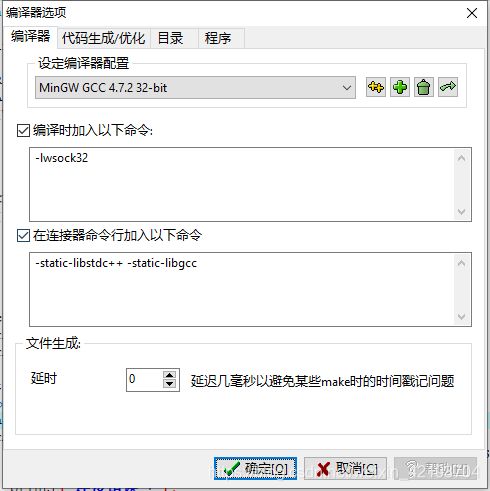实现一个 RTSP 服务器需要考虑以下几个方面:
1. RTSP 协议的实现;
2. RTP/RTCP 协议的实现;
3. 视频编码和解码的实现;
4. 网络传输的实现。
其中,RTSP 协议和 RTP/RTCP 协议是 RTSP 服务器的核心,视频编码和解码是 RTSP 服务器的重要功能,而网络传输则是 RTSP 服务器的基础。
下面是一个使用 C++ 和 FFmpeg 实现 RTSP 服务器的示例代码:
```
#include <iostream>
#include <string>
#include <chrono>
#include <thread>
#include <cstdlib>
#include <cstdio>
#include <cstring>
#include <cmath>
extern "C" {
#include <libavformat/avformat.h>
#include <libavdevice/avdevice.h>
#include <libavcodec/avcodec.h>
#include <libswscale/swscale.h>
#include <libavutil/imgutils.h>
#include <libavutil/time.h>
}
using namespace std;
#define WIDTH 640
#define HEIGHT 480
#define FPS 25
int main(int argc, char* argv[])
{
AVFormatContext* pFormatCtx = NULL;
AVOutputFormat* fmt = NULL;
AVStream* video_st = NULL;
AVCodecContext* pCodecCtx = NULL;
AVCodec* pCodec = NULL;
uint8_t* picture_buf = NULL;
AVFrame* picture = NULL;
int size;
int framecnt = 0;
AVPacket pkt;
int got_picture = 0;
int ret = 0;
int i = 0;
int err = 0;
AVDictionary* options = NULL;
AVIOContext* pb = NULL;
AVFormatContext* ofmt_ctx = NULL;
AVStream* video_out = NULL;
AVCodecContext* codec_out = NULL;
av_register_all();
avdevice_register_all();
// 1. 打开摄像头
AVInputFormat* ifmt = av_find_input_format("v4l2");
if (avformat_open_input(&pFormatCtx, "/dev/video0", ifmt, NULL) != 0)
{
cout << "Couldn't open input stream." << endl;
return -1;
}
if (avformat_find_stream_info(pFormatCtx, NULL) < 0)
{
cout << "Couldn't find stream information." << endl;
return -1;
}
av_dump_format(pFormatCtx, 0, "/dev/video0", 0);
// 2. 初始化编码器
fmt = av_guess_format("rtsp", NULL, NULL);
if (!fmt)
{
cout << "Couldn't guess format." << endl;
return -1;
}
pCodec = avcodec_find_encoder(fmt->video_codec);
if (!pCodec)
{
cout << "Couldn't find encoder." << endl;
return -1;
}
video_st = avformat_new_stream(NULL, pCodec);
if (!video_st)
{
cout << "Couldn't create video stream." << endl;
return -1;
}
pCodecCtx = video_st->codec;
pCodecCtx->codec_id = fmt->video_codec;
pCodecCtx->codec_type = AVMEDIA_TYPE_VIDEO;
pCodecCtx->bit_rate = 400000;
pCodecCtx->width = WIDTH;
pCodecCtx->height = HEIGHT;
pCodecCtx->time_base.num = 1;
pCodecCtx->time_base.den = FPS;
pCodecCtx->gop_size = 10;
pCodecCtx->max_b_frames = 1;
pCodecCtx->pix_fmt = AV_PIX_FMT_YUV420P;
if (pCodec->id == AV_CODEC_ID_H264)
{
av_opt_set(pCodecCtx->priv_data, "preset", "slow", 0);
}
if (avcodec_open2(pCodecCtx, pCodec, &options) < 0)
{
cout << "Couldn't open codec." << endl;
return -1;
}
av_dump_format(ofmt_ctx, 0, "rtsp://localhost:8554/live.sdp", 1);
// 3. 初始化 AVIOContext
avformat_alloc_output_context2(&ofmt_ctx, NULL, "rtsp", "rtsp://localhost:8554/live.sdp");
if (!ofmt_ctx)
{
cout << "Couldn't create output context." << endl;
return -1;
}
pb = avio_alloc_context(NULL, 0, AVIO_FLAG_WRITE, NULL, NULL, NULL, NULL);
if (!pb)
{
cout << "Couldn't create AVIOContext." << endl;
return -1;
}
ofmt_ctx->pb = pb;
// 4. 添加输出流
video_out = avformat_new_stream(ofmt_ctx, NULL);
if (!video_out)
{
cout << "Couldn't create output stream." << endl;
return -1;
}
codec_out = video_out->codec;
codec_out->codec_id = pCodec->id;
codec_out->codec_type = AVMEDIA_TYPE_VIDEO;
codec_out->bit_rate = 400000;
codec_out->width = WIDTH;
codec_out->height = HEIGHT;
codec_out->time_base.den = FPS;
codec_out->time_base.num = 1;
codec_out->pix_fmt = AV_PIX_FMT_YUV420P;
if (ofmt_ctx->oformat->flags & AVFMT_GLOBALHEADER)
{
codec_out->flags |= AV_CODEC_FLAG_GLOBAL_HEADER;
}
// 5. 打开输出流
err = avio_open(&ofmt_ctx->pb, ofmt_ctx->url, AVIO_FLAG_WRITE);
if (err < 0)
{
av_log(NULL, AV_LOG_ERROR, "Could not open output URL '%s'\n", ofmt_ctx->url);
return -1;
}
err = avformat_write_header(ofmt_ctx, &options);
if (err < 0)
{
av_log(NULL, AV_LOG_ERROR, "Error occurred when opening output URL\n");
return -1;
}
// 6. 开始编码和发送数据
picture = av_frame_alloc();
size = avpicture_get_size(pCodecCtx->pix_fmt, pCodecCtx->width, pCodecCtx->height);
picture_buf = (uint8_t*)av_malloc(size);
avpicture_fill((AVPicture*)picture, picture_buf, pCodecCtx->pix_fmt, pCodecCtx->width, pCodecCtx->height);
av_new_packet(&pkt, size);
while (true)
{
if (av_read_frame(pFormatCtx, &pkt) >= 0)
{
if (pkt.stream_index == 0)
{
// 解码
avcodec_decode_video2(pCodecCtx, picture, &got_picture, &pkt);
if (got_picture)
{
// 编码
picture->pts = av_rescale_q(framecnt, pCodecCtx->time_base, video_st->time_base);
ret = avcodec_encode_video2(pCodecCtx, &pkt, picture, &got_picture);
if (ret >= 0 && got_picture)
{
pkt.stream_index = video_st->index;
av_packet_rescale_ts(&pkt, pCodecCtx->time_base, video_st->time_base);
pkt.pos = -1;
err = av_interleaved_write_frame(ofmt_ctx, &pkt);
if (err < 0)
{
av_log(NULL, AV_LOG_ERROR, "Error muxing packet\n");
break;
}
cout << "Write frame " << framecnt << endl;
framecnt++;
}
av_packet_unref(&pkt);
}
}
}
else
{
av_seek_frame(pFormatCtx, 0, 0, AVSEEK_FLAG_FRAME);
}
this_thread::sleep_for(chrono::milliseconds(40));
}
av_write_trailer(ofmt_ctx);
avcodec_close(pCodecCtx);
av_free(pCodecCtx);
av_free(picture_buf);
av_free(picture);
avio_close(ofmt_ctx->pb);
avformat_free_context(ofmt_ctx);
avformat_close_input(&pFormatCtx);
return 0;
}
```
在上面的代码中,我们使用 FFmpeg 库打开摄像头,并初始化了一个 RTSP 服务器,将摄像头采集到的视频编码后发送给客户端。
在代码中,我们首先打开摄像头,然后初始化编码器。接下来,我们初始化 AVIOContext,添加输出流并打开输出流。最后,我们开始编码和发送数据。
编译代码时需要链接 FFmpeg 库:
```
g++ -o rtsp_server rtsp_server.cpp -lavdevice -lavformat -lavcodec -lavutil -lswscale -lpthread
```
启动代码后,可以使用 VLC 等 RTSP 客户端访问 RTSP 服务器:
```
vlc rtsp://localhost:8554/live.sdp
```
这样就可以在客户端上观看摄像头采集到的视频了。
 先看 效果截图
先看 效果截图 








 最低0.47元/天 解锁文章
最低0.47元/天 解锁文章















 843
843











 被折叠的 条评论
为什么被折叠?
被折叠的 条评论
为什么被折叠?








